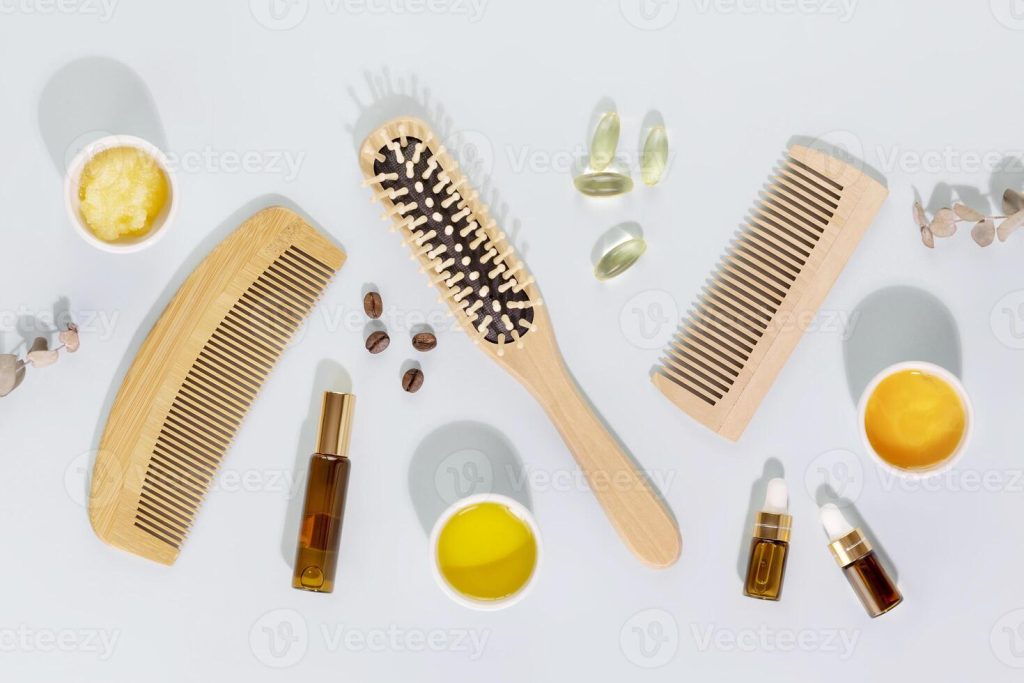India’s diverse geography creates a wide range of climates—from the arid deserts of Rajasthan to the tropical coasts of Kerala. This variation means your hair care routine should adapt depending on where you live or travel. In this blog, we’ll explore tailored hair care tips for different Indian climates to help you maintain strong, lustrous hair all year long.
Table of contents
1. Hair Care in Dry and Arid Regions (North-West India: Rajasthan, Gujarat, Parts of Punjab and Haryana)
Climate Characteristics
Low humidity, high temperatures, harsh sunlight, and water scarcity. These conditions dehydrate both scalp and strands, leading to frizz, breakage, and an itchy scalp.
Common Hair Issues
- Brittle strands and split ends
- Dry scalp and dandruff
- Faded hair color due to UV exposure
- Thinning from dehydration
Hair Care Tips
- Pre-wash oil treatments with almond or coconut oil help lock in moisture. Slightly warming the oil boosts absorption.
- Use hydrating shampoos and conditioners containing aloe vera, glycerin, or hyaluronic acid. Avoid sulfates that strip natural oils.
- Apply weekly hair masks made with banana, honey, or yogurt to restore elasticity.
- Use leave-in conditioners with UV filters and wear a scarf or hat outdoors to protect from sun damage.
2. Hair Care in Humid and Coastal Regions (South and West India: Kerala, Tamil Nadu, Goa, Mumbai)
Climate Characteristics
High humidity year-round, salt in the air, and frequent sweating can make hair limp and greasy while increasing risk of fungal infections.
Common Hair Issues
- Oily scalp and flat roots
- Frizzy, unmanageable hair
- Fungal scalp conditions
- Hair fall due to clogged follicles
Hair Care Tips
- Use clarifying shampoos once a week to remove excess oil and buildup. Look for ingredients like tea tree oil, salicylic acid, or charcoal.
- Opt for lightweight, water-based serums like argan oil or marula oil to control frizz.
- Rinse with apple cider vinegar monthly to restore scalp pH and reduce dandruff.
- Wear loose hairstyles to reduce scalp sweating and tangling. Wash combs and hair accessories frequently.
3. Hair Care in Cold, Hill Regions (North-East and North India: Himachal, Uttarakhand, Kashmir, Sikkim)
Climate Characteristics
Cold temperatures, low humidity, and indoor heating create dry environments that strip moisture from hair and scalp.
Common Hair Issues
- Flaky, itchy scalp
- Static and flyaways
- Breakage and dullness
- Slower hair growth
Hair Care Tips
- Apply warm castor or jojoba oil twice a week to deeply moisturize and strengthen roots.
- Use satin-lined caps or scarves to reduce breakage from wool and static friction.
- Switch to co-washing (using conditioner only) during extreme cold to avoid over-drying.
- Use a humidifier indoors to maintain scalp moisture during winters.
4. Hair Care in Polluted Urban Areas (Delhi, Bengaluru, Kolkata, Hyderabad)
Climate Characteristics
High levels of air pollution, exposure to dust, and chemically hard water create environmental stress that impacts the hair shaft and scalp health.
Common Hair Issues
- Premature greying
- Scalp irritation and dandruff
- Hair fall and breakage
- Product buildup and dull hair
Hair Care Tips
- Use a double cleansing method: oil your scalp before shampooing with a sulfate-free cleanser to remove pollutants.
- Apply antioxidant-rich hair masks with ingredients like green tea, amla, or vitamin C to combat free radicals.
- Exfoliate your scalp monthly using a mild sugar or coffee-based scrub.
- Install a shower filter to reduce mineral content in hard water and protect your hair’s natural balance.
5. Seasonal Hair Care Adjustments
Summer
- Use UV-protective sprays if outdoors frequently
- Wash hair more often to manage sweat and oil
- Aloe vera gel soothes the scalp naturally
Monsoon
- Use antifungal shampoos with ingredients like ketoconazole or neem
- Avoid tying up wet hair
- Rinse thoroughly to avoid residue buildup
Winter
- Increase frequency of oil massages
- Use richer conditioners and avoid very hot water
- Switch to creamy, nourishing hair products
6. Nutrition and Lifestyle for Healthy Hair
Regardless of your region, strong hair starts from within. The right nutrients and habits play a huge role in maintaining hair health.
Essential Nutrients
- Biotin (Vitamin B7): eggs, nuts, seeds
- Iron: spinach, lentils, jaggery
- Omega-3 fatty acids: fish, flaxseeds, walnuts
- Zinc and selenium: dairy, mushrooms, whole grains
Hydration and Sleep
- Drink at least 2–3 liters of water daily
- Get 7–8 hours of sleep every night to support healthy hair growth cycles
- Reduce stress through mindfulness, yoga, or light physical activity
Customize Your Hair Care According to Climate
India’s diverse climates require flexible hair care routines. Whether you live in the humid South, dry North, or polluted metros, your environment influences how your hair behaves and what it needs. Understanding this allows you to build a smart, region-specific hair care strategy that protects, nourishes, and enhances your natural beauty throughout the year.


